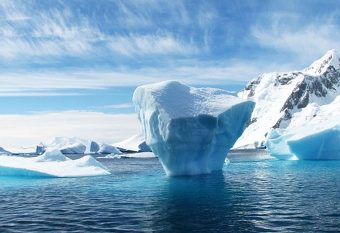
The biggest iceberg in recorded history has broken off of Antarctica’s Larsen C ice shelf, sending a trillion tons of ice trillion-ton Larsen C Iceberg has broken offinto shipping lanes. If only somebody could tow this Larsen C iceberg to California, it would go a long way toward solving the Southwest’s water shortages…
Scientists worry that the entire Larsen C ice shelf could destabilize (as happened after similar iceberg-calving events at the ice shelf’s neighbors, Larsen A and Larsen B) and even break up. If that happens, it acts like a cork being pulled from a bottle and releases the continent’s interior glaciers, accelerating their rush to the sea and adding to sea level rise.
Keep in mind that when the IPCC made its estimate of sea level rise as “only” three feet by 2100, that did NOT include any rise caused by Antarctic melting, as scientists simply didn’t know enough about whether Antarctic ice was even melting at the time. Now that it’s clear that melting is taking place and accelerating, that could up sea level rise by several feet or even meters. There’s enough ice stored up on Antarctica to raise sea level 220 feet!
Meanwhile, climate activists have launched a campaign to rename the Larsen C iceberg as the “Exxon Knew 1 iceberg,” highlighting their campaign to hold the oil giant accountable for the way they mashed up 30 years of climate knowledge (internally) with 30 years of climate denial (externally).
Writing at Rolling Stone, Jeff Goodell, author of The Water Will Come: Rising Seas, Sinking Cities, and the The Water Will Come: Rising Seas, Sinking Cities, and the Remaking of the Civilized World, by Jeff GoodellRemaking of the Civilized World, notes:
“A few months ago, I outlined the risks of a rapid collapse of the ice sheets in Antarctica in a story about Thwaites glacier in West Antarctica. The dynamics at work on Thwaites are far more complex than what we’re seeing right now with the Larsen C. But if Thwaites really starts to go, we’re headed for a future with 6,000-foot-high ice shelves collapsing into the sea and dramatic sea level rise of as much as 10 feet. As Ohio State glaciologist Ian Howat told me earlier this year, ‘If there is going to be a climate catastrophe, it’s probably going to start at Thwaites.’
“We are living at a scary moment, a time when even the best scientists are struggling to understand just how quickly and dramatically our world can change. Maybe the best way to think about the Larsen C is as a prelude to the coming catastrophe, and as a last-minute call to action. ‘The Larsen C is Mother Nature’s warning flag,’ polar explorer Robert Swan said at the Sun Valley Institute’s annual forum last week. ‘It’s her way of saying, “Hey, pay attention to what you’re doing to the planet we all live on.”‘”
Source: cleantechnica.com




